A Jaguar C-Type Continuation and the debate about “real” cars
‘Twas Hamlet who inquired most eloquently about being or not being, but car collectors and enthusiasts alike have their own internal debate, one that has been going on for decades. What is real? What isn’t? Should copies (aka fakes, replicas, reproductions, clones, tributes, etc.) even exist? Is a chassis tag enough to qualify a significant car as genuine? What if it’s a rebuilt wreck? What if it’s a copy so exact and accurate that no one can tell it isn’t an in-period factory original?
My opinion on this whole real vs. replica issue: If it’s not the real deal, then why bother? However, I recently got some seat time in a C-Type Continuation from Jaguar Classic, and now I’m having an existential crisis.

Continuation cars are similar to replicas, albeit with a few key differences. Built by the same companies who made the originals, and to identical or near-identical specifications, continuation cars are in a material sense the real deal, just assembled a few decades late. Carmakers like Aston Martin and Bentley have seen values of some of their greatest classics soar, and they understandably seized on the opportunity to meet market demand with their own fresh products. Jaguar Classic got into the continuation game in 2016, recreating the Lightweight E-Type. It quickly moved to the XKSS road car and then the D-Type race car that took Le Mans by storm in the mid-1950s.
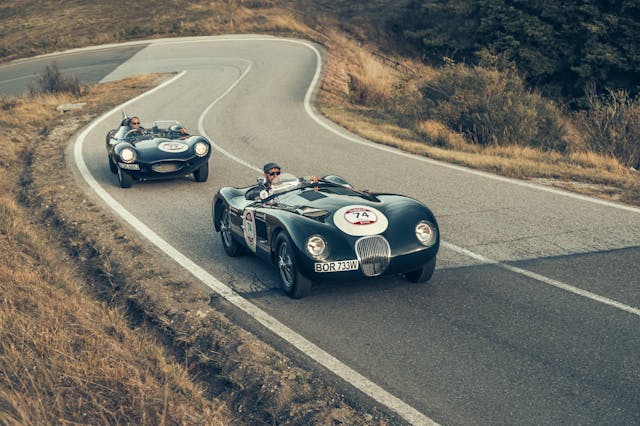
The latest to join this prowl of new-old Jags is the C-Type Continuation, one of which was offered to me for the Modena Cento Ore, a 900-kilometer gentleman/gentlewoman racers’ luxury road and track rally through some of the more recognizable bits of northern Italy. Built in 2021, this example was crafted to 1953 specifications. 1953 was the year the C-Type took first, second, fourth, and ninth at Le Mans thanks to a banger of an engine, smooth aerodynamics, and novel disc brakes. Technically this car is still quite new, but driving it through Tuscany easily passed for the best kind of time travel.
The raucous Weber-fed XK engine and non-synchro four-speed gearbox presented the same mechanical engagement felt by Tony Rolt and Duncan Hamilton when they whizzed down the Mulsanne Straight 70 years ago. The hand-built 3.4-liter straight six—identical to those that left the factory in ’53—never needed high revs thanks to its abundant torque, but it sure felt eager, like it wanted to you to give it the beans and flirt with the redline. The expansive hood out front, Spartan interior with analog gauges, and sounds and smells blasting past completed the experience. The only thing that didn’t feel “classic” about this English race car was the lack of stress over whether it would start. At no point did I say to myself “shame it’s not real,” and I doubt anybody watching it roar through the Umbrian countryside did, either.
Which brings me back to the real vs. not-real dilemma. Well-done C-Type replicas from companies like Lynx or Proteus have, for decades, offered a much more affordable alternative to the originals. The delicious C-Type Continuation from Jaguar Classic, on the other hand, costs about £1.5M ($1.82M). Rarity is an important part of the original’s appeal, of course; you may remember that Jaguar only screwed together 53 original C-Types from 1951–53. The last one to sell at auction brought $5.285M and most of the ones that still exist live on quietly in large collections. Real C-Types, especially ones with serious race history, are so valuable that many find it difficult to justify taking them out and driving them as originally intended. As a result, an exact copy or a very close one—a car that gives the same experience without the risk—can make a lot more sense.
This dilemma is hardly unique to Jaguars, nor is it new. Chuck Beck made his first Porsche 550 Spyder copies over 40 years ago. Various contemporary builders have paid tribute to the late 1960s Yenko Camaro, and folks from Pur Sang in Argentina build a Bugatti Type 35 replica, which, but for six minor details that are different from the 1920 originals, might fool even the keenest of eyes. There are likely more replica Porsche 356 Speedsters on the road than real ones, and certainly more Shelby Cobra replicas than the real thing.
“If we relied on only original owners, we would have three members,” says Norman Jesch, president of the Southern California Cobra Club. “And the guys who really care, those guys with the early cars who used to take issue? I beg your pardon, but they’ve passed away.”
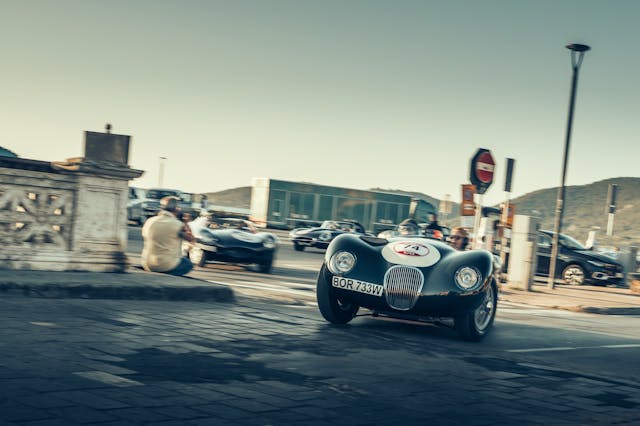
“Any potential controversy comes from owners who for various reasons consider their cars original or try to pass them off as such. But now, with modern technology, there isn’t too much of that. It’s easy enough to confirm with a CSX number if someone’s Cobra is real,” according to Jesch.
In speaking with Jesch and others about this topic, I thought I’d find plenty of people who are dead set against non-authentic cars. In fact, it was nearly impossible, as replicas and continuations appear to have found their place in the hobby.
“Even the Bugatti guys who aren’t in love with Pur Sang replicas don’t have much of an argument. No one’s going to put one of them up for auction, call it real, and devalue the originals,” says Logan Calkins, Director of Events at Hagerty.
Replicas, reproductions, kits, and tributes (Hagerty will insure most of them) keep the original marques, some of which are long gone, out there and relevant. Continuations only further tie in the heritage. They’re touchpoints for young enthusiasts just getting into classic cars and for weekend racers channeling their inner Stirling Moss.
Would I prefer the real thing? Who wouldn’t? But if these cars stir the same emotions on the road and help keep the love of classic cars alive, then where’s the rub? Taking in all the sights, sounds, and smells of the 1950s via a car with a twenty-first century build date, I’m reminded that the true joy is in what a car delivers more so than in what it is.
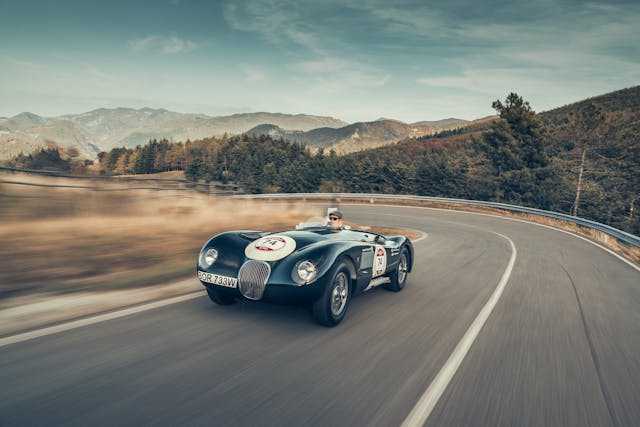
***
Check out the Hagerty Media homepage so you don’t miss a single story, or better yet, bookmark it. To get our best stories delivered right to your inbox, subscribe to our newsletters.

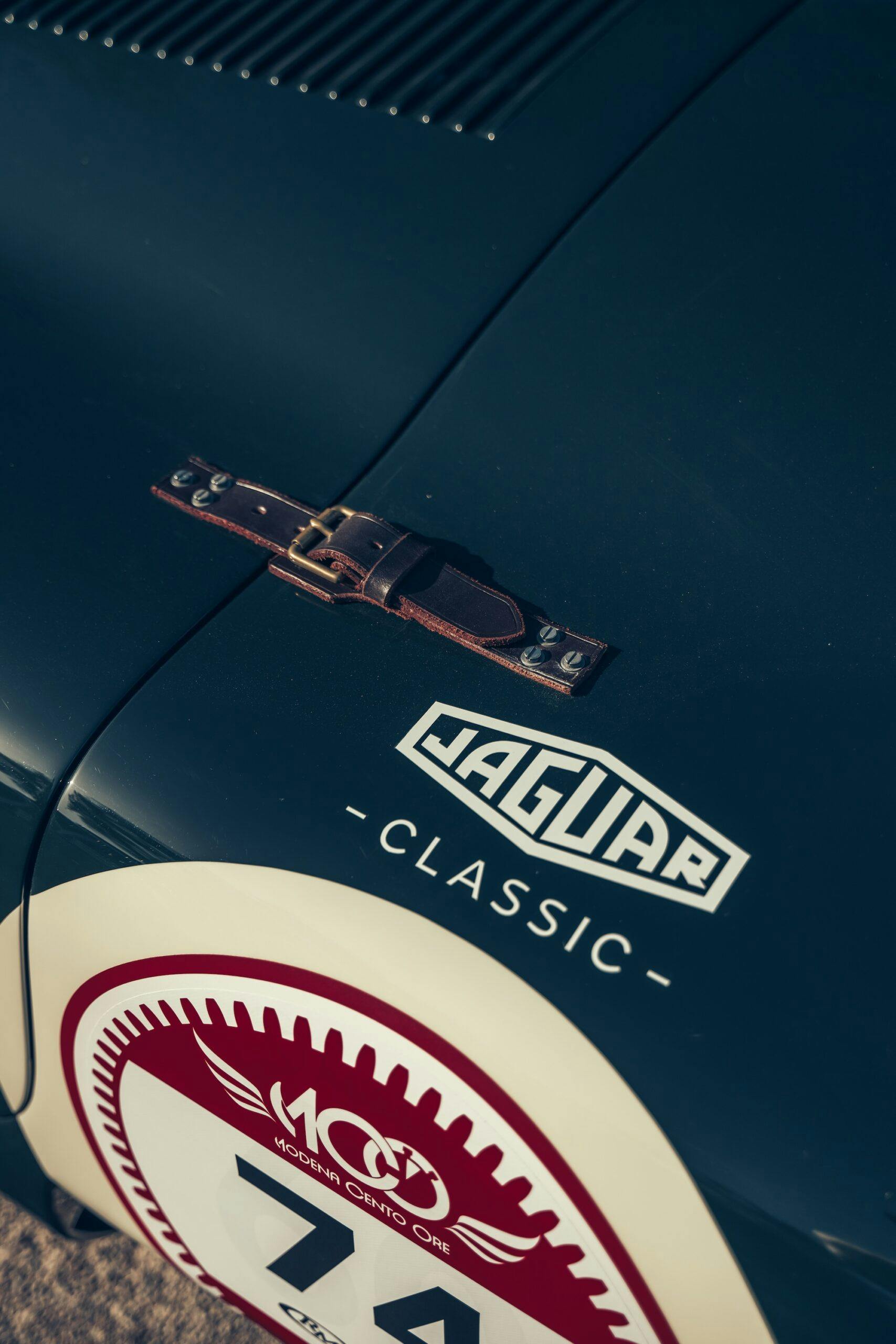
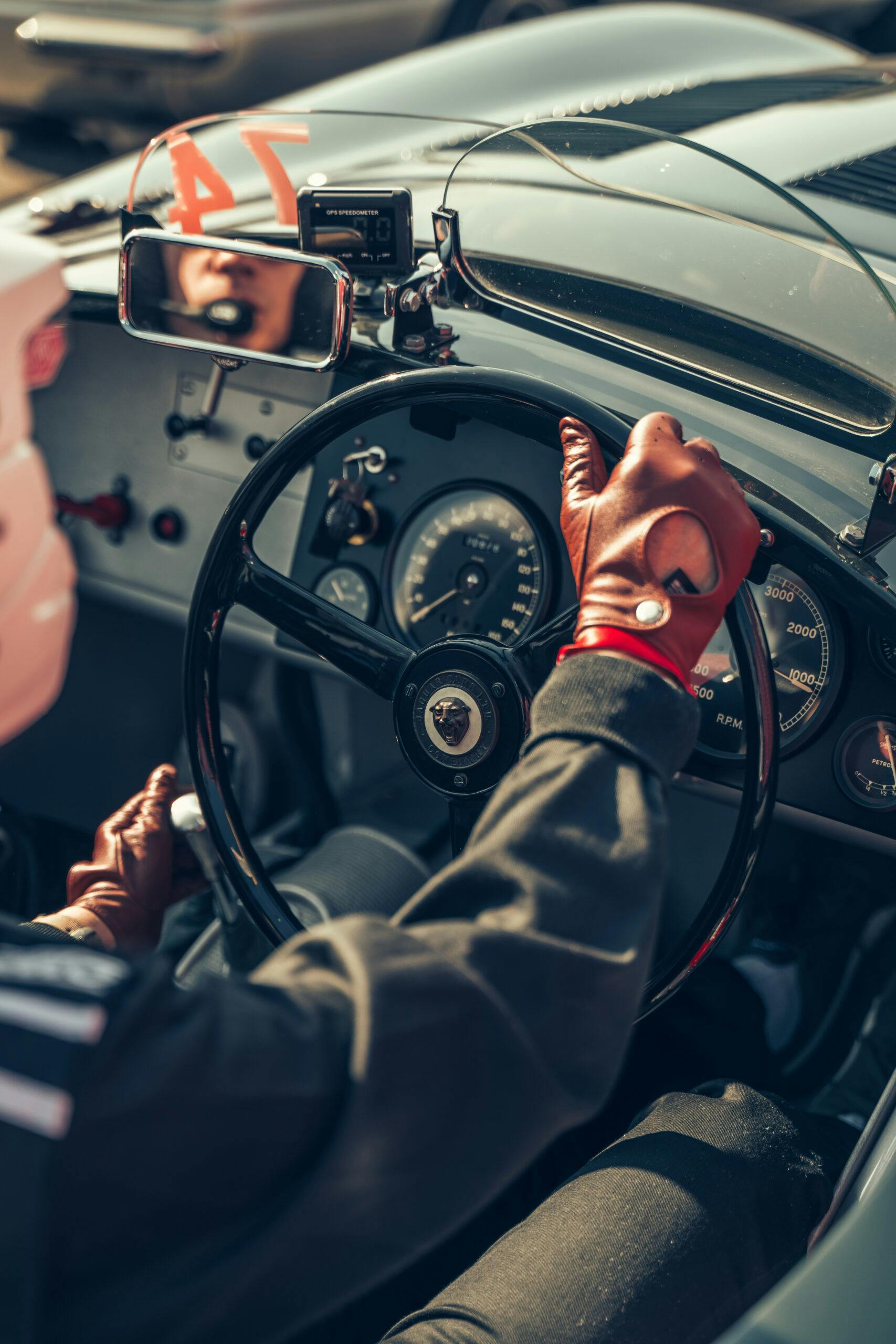


I am totally ok with replicas or whatever you want to call them. As long as they are identified as such. Charlatans that try to pass them off as real deserve every bad thing that happens to them. I get that the more authentic the copy the greater the cost. There’s probably a happy medium where most of the look and feel is there but the added cost of total authenticity is avoided. Sadly, even that more moderate cost is above what many of us can afford.
I have always felt these cars need a classification of their own.
They are not the original production.
They are not kit cars.
They are real Jags in this case and built as well or to be honest better than the original.
I hate the term continuation as we could come up with a better term. How about calling them a Gen 2 or Heritage model? This would only apply to those built buy the original builders like Shelby. Bentley. Holman and Moody. Aston. etc.
I would love to encourage the companies to continue to do cars like this. I know the original owners may not like it but they will never be built in numbers that will hurt them and the value will always be on the original.
Cars like this can be raced and if shown create a group just for them.
As long as the companies that build these cars and the people who by them are honest about what they are, what’s the harm? There’s enough room for all of us.
Not only “enough room”, but actually “more” room. By that I mean that the tributes, continuations, etc. make it possible for more folks to be able to participate in driving, showing, and enjoying their favorites. First, for many models, there is a small and diminishing supply, so some people just flat can’t get a car they desperately want, and second (although closely related) is that the replicas are often the only way that “regular people” can AFFORD their favorite. So we add people to the ranks of enthusiasts and drivers as well as give observers more chances to see certain models “in the wild”. Yes, they may be seeing just a good copy, but that’s likely better than not seeing the car at all.
I agree with other commenters that as long as there is no attempt to actually pass a clone off as “the real thing”, there is little to no harm. The danger is that when it comes to money, dishonestly generally follows close behind. I’m glad that the technology and forensics are making it tougher for bad people to try to cheat in that way. And as always, “caveat emptor” applies.
Full disclosure: I drive a 1966 Pontiac LeMans that is cloned to resemble a GTO. It is NEVER presented as a true GTO, but it darned sure looks like one. And it only exists because I could not afford a real one…
The real/replica debate is just another form of gatekeeping. Unless your replica is dangerous to drive because of shoddy work, or you try to pass it off as a genuine article to fleece someone, who cares? I’d honestly rather have a really good Factory 5 Cobra than a “real” Shelby because I would actually drive the thing and not worry that I was going to wad up a multi-million dollar piece of history. Perhaps a bit more exposure to Baudrillard is in order for the car community. https://en.wikipedia.org/wiki/Simulacra_and_Simulation
Where I disagree is where a car is not built by the original MFG.
Cars like the Factory 5 are great cars they are not real Shelby’s build by Shelby company. They are also modified and more modern so while they look similar it is not a continuation.
I am all for cars like factory 5 being built but it is just another page in the book that needs to be placed in its own segment.
It’d be pretty hard to get the original MFG to build a Pontiac GTO, but knock yer socks off trying! 😋
No money in repo GTO’s. GM could never make any real money doing this. That is why we only see the high end low volume production race cars being done. You can move them for a million dollars and that is a deal vs trying to by of of thirty something Ferrari GTOs that go for $70 Million.
It is not like there’s a shortage of GTO’s. You may be short the money to buy but you they are still easy to find as they are far from rare.
Back in I built one of these replica Porsche 550A with middle engine VW 1776 cc and dual twin choke Weber’s. I purchased the kit from Vintage Spyder of Hawaiian Gardens CA, back 1996-97. The weighed something like 1000 lb and could turn on a dime. Coil overs and disc brakes all around allowed me to experience one of my favorite sports cars, without a huge investment and worries about pushing it too hard. I did this for purely for the fun of driving and its “eye candy” appeal.
Scott
Continuation cars are real marque cars and should never be considered replicas, AS LONG AS THEY ARE BASICALLY ORIGINAL DESIGN WITH THE VAST MAJORITY OF PARTS AND MANUFACTURE JUST AS ORIGINAL. The few safety features that might be added are modern disc braking systems and a change from Girling to modern DOT fluids and a modern cooling system including fan to avoid overheating. All else should remain the same.
The Continuation cars can allow consumers to have reliable driving machines and keep the marques in front of the public to continue interest in the very best designs they produced.
To be fair, in the 1950s Jaguar called their production cars replicas. Many/most XK-120s had a dash plaque indicating it was an “exact replica” of one of the speed record cars.
Being close to the Shelby world, I’ve always been conflicted on this. But now I have a Birkin S3 (Lotus 7 replica), so I can’t be hypocritical. I have driven some cobra replicas that were a blast. Shame they didn’t use an original design. Carroll hated the replicas, unless the kit builders would pay him a fee, so then it was OK?
The modern variant’s, like Factory 5, I think are often disappointing in 9 out of 10 encounters. The replica companies are willing to make any adjustment desired by the customer, the bodies almost always look overworked, and this results in each being nearly a 1 of 1 custom rather than a replica. I’m not a fan. Many also use Shelby logos and other mix OEM parts to deceive onlookers.
What do you all do when you see replicas using real badges and trying to present themselves as authentic?
While I appreciate the desire to own a rare marque, if you don’t why would it be acceptable to glue on a real badges?
Even if you tell people it’s not a real Cobra, Ferrari, and so forth, the use of the badging and mixed real parts is a deception to either yourself, those looking on, or to both
This deception is not limited to high value models, you cannot attend a show in Colorado without at least one car attempting to ‘move up’ by changing badges, decals, or interiors.
I own an Intermeccanica speedster. With all 911 mechanicals (1987 Carerra) and a 3.6 993 engine, who cares if it’s not an original. It’s 100% better than a real 1955 speedster, which was really just a stripped down 356. Why own an antique, when you can have the charm of the old, with the performance and comfort of the new? This debate needs to be put to rest. Enjoy and appreciate both for what they are.
Ding, ding, ding!!
I agree 100%.
Does your Intermeccanica speedster use Porsche badging? An authentic steering wheel or road wheels? How far is too far in a replica?
I plead guilty.
Since 1999 I have owned a replica (in a looser sense of the word) 1914 Stutz Bearcat.
It was one of two built by George Barris in 1971 for a TV seriex.
Saw the show as a kid and fell in love with the car.
Trouble is, I couldn’t afford a $40,000 real Bearcat then, and not surprisingly, can’t afford a $300,000 to $3 million for one now.
So I looked for a Barris car for almost 30 years.
Yes, I know it’s not real, but in terms of doorless, topless driving experience, it’s awfully close.
The key part is when I drive it in my neighborhood or take it to a show, people get to experience a car they otherwise would not see.
Kids love it and their mothers ask if it is “Chitty Chitty Bang Bang”.
No one has ever complained that it didn’t come from Harry Stutz’s Indianapolis factory.
The same goes with a friend’s CAV GT-40 and Super form ance Cobra Daytona coupe. In fact the Ford won the best non-Ferrari award at a Ferrari meet a few years ago, besting a few Lamborghinis and McLarens.
I think a lot of the antagonism comes from snobs who perceive a threat to their investment or just don’t want to hang out with those who can’t afford to compete at Pebble Beach.
I have been warmly welcomed into the Stutz Club and at meets haven’t been shunned. They acknowledged the benefit of owning a car where you can get mechanical bits at NAPA.
The owner of a multi-million dollar Mercer Raceabout let me sit in his car…so owning a brass era roadster has its benefits, even if it did come from Hollywood.
I’ve had a British racing green Ford powered Fiber Fab 1952 MG TD replica for 24 years. The engine is in the right place, it makes good sounds, and the suspension works surprisingly well. And in 24 years I’ve changed oil, headlights, a heater hose, a clutch cable and a starter. Everybody smiles when they see it, and everybody that rides in it wants to own it. I always admit what it is. I always figured that people who talk down kits and replicas weren’t real car people or were Ferrari owners. LOL
I’m fine with continuation cars. As long everyone is honest then those that care can safely avoid what they don’t want and others can move forward knowing what it is.
I have always been under the impression that the easiest way to tell a genuine Cobra from a Fake Snake is that the originals had a frame manufactured using round tube and the fakes were all made using square tube. Don’t know how true that is.
Talking of Stirling Moss, he had a favourite classic at Goodwood when they had a stable of classic cars for track days and he was invited to give fast passenger laps. He always made a beeline for it.
I drove it and it was pure driving pleasure, not the fastest but alive and responsive.
That car was a Porsche 2.7 RS but it wasn’t an original factory built one.
If it’s good enough for Sterling…….